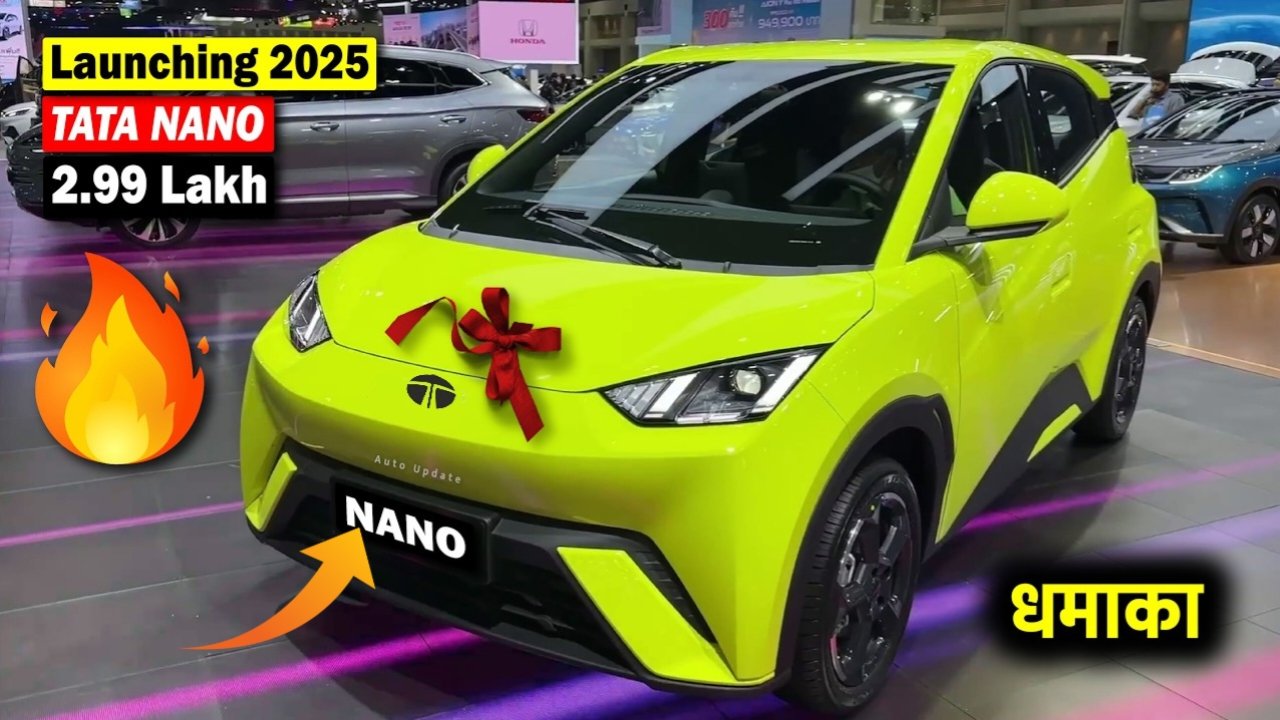Tata Nano’s updated version has created a buzz in the market, book it in advance by paying just ₹21,000
Tata Nano’s Updated Version: Better, Latest & More Practical
The Tata Nano is a name that almost every Indian remembers. When it was launched in 2008, it was promoted as the world’s cheapest car, made for the common man. Though it didn’t perform well in the market as expected, the Nano still holds a special place in Indian automobile history.
Now, there is talk about an updated version of the Tata Nano, and this time, it looks like Tata Motors is serious about making a comeback—with a better design, more features, and an electric twist. The company seems to be targeting the affordable electric car market, which is growing rapidly in India.
Here is a quick overview of what the updated Tata Nano is expected to offer:
Overview Table: Tata Nano Updated Version (Expected)
| Feature | Details (Expected) |
|---|---|
| Launch Date | Late 2025 or Early 2026 |
| Type | Electric Hatchback |
| Range | 200–250 km on a single charge |
| Top Speed | Around 80–100 km/h |
| Seating Capacity | 4 persons |
| Transmission | Automatic (Single Speed) |
| Price Range (Expected) | ₹4.5 to ₹6 lakh (ex-showroom) |
| Target Audience | City commuters, budget buyers, EV beginners |
Design & Style
The new Tata Nano will not look like the old boxy model we remember. Tata is expected to redesign it with a more modern and curvy look. The headlights may be sharper, the body more compact yet stylish, and the ground clearance will probably be better for Indian roads.
It might get LED DRLs (Daytime Running Lights), a fresh-looking front grille (even if it’s electric and doesn’t need one), and better quality in materials. The new Nano will also likely come in vibrant color options, appealing to the young crowd.
Engine & Performance
Since this version is likely to be an electric car, there won’t be a petrol engine. Instead, it will come with a small electric motor, perfect for city rides. While it may not be very powerful, it will be smooth, silent, and clean. The expected power output could be around 25-35 kW (30-45 horsepower), which is enough for daily urban driving.
It’s not meant for high-speed highway travel, but for short city commutes, this performance will be ideal.
Ride & Handling
The updated Nano should offer a more comfortable ride than before. Tata is known for improving suspension and ride quality in their recent models. Expect soft suspension for bumpy roads, light steering for easy turning in traffic, and better tyres for grip and safety.
It’s still a small car, so handling narrow lanes and tight parking spots will be easy. The turning radius is expected to be small, which is great for city driving.
Features & Tech
Earlier, Nano had very few features. But this time, things will change. Even for a budget electric car, Tata is expected to include:
-
Touchscreen infotainment system
-
Digital instrument cluster
-
Power windows
-
Central locking
-
Bluetooth connectivity
-
Rear parking sensors
-
Remote lock/unlock
These are basic, but necessary, features that modern buyers expect, even in entry-level cars. And Tata knows that well now.
Mileage & Fuel Efficiency
Since it’s going to be electric, the term “mileage” means how much range you get per full charge. As per reports and expectations, the updated Nano might offer a range of 200 to 250 kilometers on a single charge.

That is more than enough for daily use like going to office, market, or college. Plus, electric cars are cheaper to run. The cost per kilometer could be as low as ₹1–1.5, depending on your electricity rate.
Price & Variants
One of the key selling points of the new Tata Nano will be its price. Tata may keep the starting price around ₹4.5 lakh, with higher variants going up to ₹6 lakh. This pricing will make it India’s most affordable electric car.
There may be 2–3 variants: a base model with minimal features, and a top variant with more tech and comfort.
FAQs
Q. Will the new Tata Nano be petrol or electric?
A. It is expected to be an electric vehicle (EV).
Q. What will be the price of the updated Nano?
A. Around ₹4.5 lakh to ₹6 lakh (ex-showroom, expected).
Q. When will it launch?
A. It may launch in late 2025 or early 2026.
Q. How much range will it offer?
A. Around 200–250 km per charge.
Q. Will it be good for long travel?
A. It’s more suited for short city drives, not long highway trips.
Q. Can I charge it at home?
A. Yes, like most EVs, it can be charged with a regular home plug or fast charge